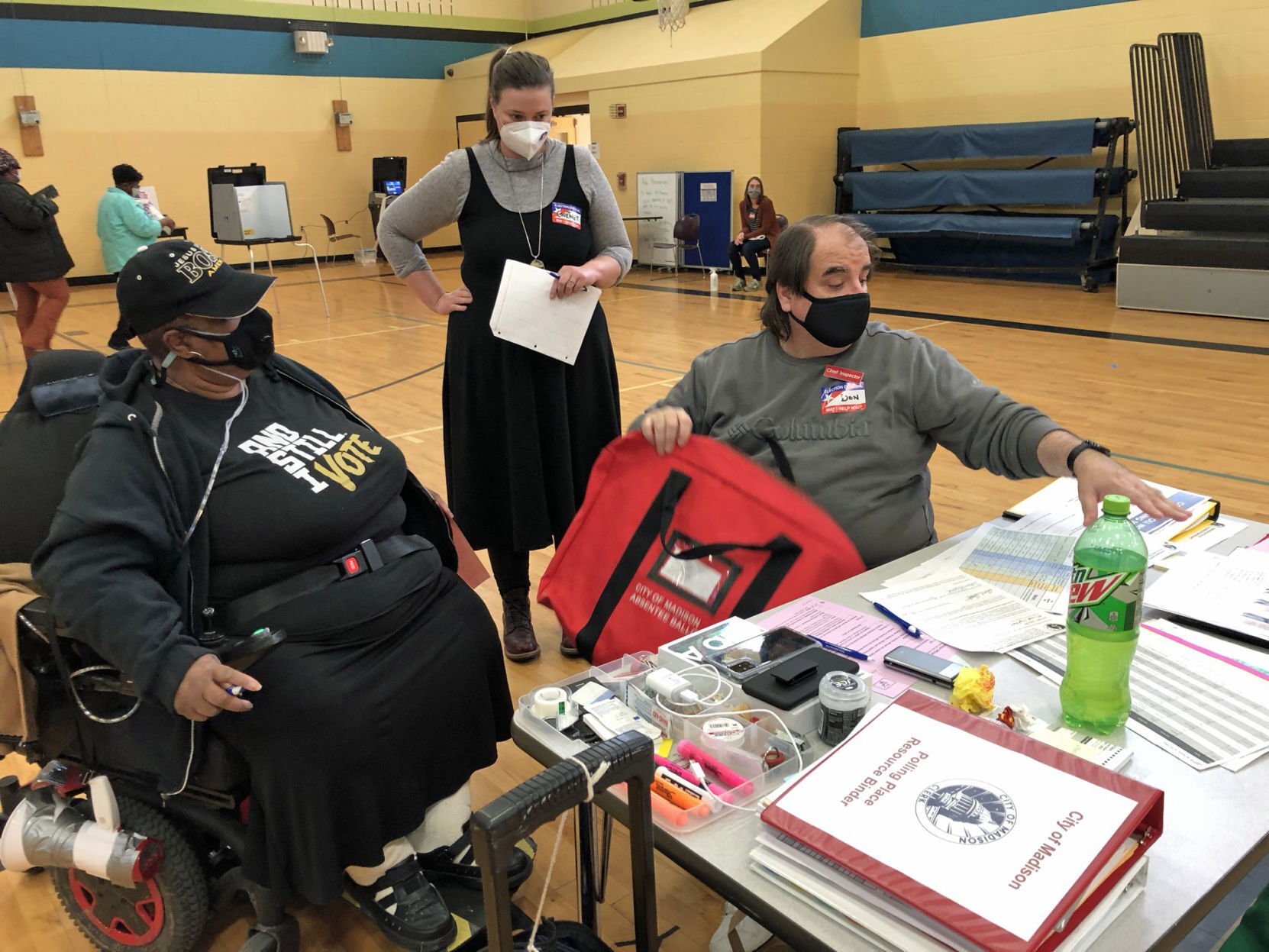| Peter Cameron ∙ Journal Times |
Elections are supposed to be the mechanism voters use to choose their political representatives. But increasingly, it appears the elected leaders who choose the voters. Changes could be made to prevent this.
Experts say that system is much to blame for our increasingly toxic political environment, where elected officials are incentivized against working together to solve problems.
”Representation of parties in this way completely avoids the problem of partisan gerrymandering.
Different, and some would say more effective, election frameworks exist. Some are starting to emerge in the U.S.
One is proportional representation. Countries across the world use it in a variety of forms to elect their politicians. Some experts believe it could motivate elected officials to collaborate more often while cooling some of the rage in politics.
Every state in the country’s current election map consists of a patchwork of overlaying state and federal districts. In Wisconsin, eight members of Congress, 33 state senators and 99 state representatives each represent one district.
In one form of proportional representation, all candidates would run across the entire state — like U.S. senators do — eliminating districts altogether. Another proportional representation model would divide the state into a couple, massive districts, which would be represented by multiple elected officials, instead of just one.
The larger size makes the districts much harder or even impossible to gerrymander, which renders the importance of who draws the districts almost irrelevant, experts say.
“In a purple state such as Wisconsin, (a proportional representation system) would probably mean that the congressional delegation and both chambers of the state legislature would be nearly equally divided between the two major parties,” Barry Burden, a UW-Madison political science professor wrote in an email. “Representation of parties in this way completely avoids the problem of partisan gerrymandering.”
The number of seats a political party gets depends on the percentage its candidates receive in the election. If, for example, Democratic candidates get 47% of the total vote across the state, Republican candidates 46%, Libertarian Party candidates 6% and Greens 4%, each party would receive an equivalent number of seats. Often a party must reach a minimum percentage of the vote before it wins seats.
Under our current system, regularly winning about half the vote or less, Republicans in Wisconsin control close to ⅔ of the seats in both houses of the state legislature, giving them a near supermajority.
Protected by gerrymandering and thus with little fear of losing those majorities, state Republicans have made little to no effort to adopt measures that have strong support across Wisconsin. Those include legalizing marijuana, mandating universal background checks on all firearms purchases, enacting red flag laws on guns, and expanding Medicaid, said Charles Franklin, director of the Marquette Law School Poll.
Other potential benefits of proportional representation include boosting third parties and independent candidates. Minor parties like the Greens or Libertarians have little chance of success in the existing winner-take-all system. A proportional system could enable them to win seats in the U.S. House of Representatives or state legislatures.
In addition, if Republicans and Democrats each failed to win a majority of the vote and therefore seats in the state legislature or Congress, both would have to negotiate with minor parties to pass legislation.
“That could lead to more fluid coalitions when it comes to making policy and could help mitigate the zero-sum politics that currently defines how the major parties interact in the capital,” Burden said.
But to enact proportional representation, Congress would have to scrap the single-member district mandate, which has been in place since 1967.
At least one effort is underway. U.S. Rep. Donald Beyer, a Virginia Democrat, has introduced The Fair Representation Act, which would eliminate single-member districts and replace them with multi-member districts across the country, drawn by an independent commission. The bill would also launch ranked-choice voting, which allows voters to rank candidates based on their preference rather than voting for one. Maine and Alaska use the system, and Nevada and Missouri are considering it.
The bill has no Republican sponsors though, giving it a very low likelihood of passage.
In Wisconsin, the state’s constitution must be amended to enact proportional representation, according to Burden. That’s a highly unlikely scenario at the moment.
But another reform has brighter prospects here.
Push for change in Wisconsin
Ranked-choice voting, which requires a candidate win a majority of the vote before they win a seat, is gaining momentum across the country. Many cities, including New York City, Minneapolis, and Saint Paul, also use it.
Last year, a bipartisan group of legislators in Wisconsin, including state Sen. Dale Kooyenga, R-Brookfield, and state Rep. Daniel Riemer, D-Milwaukee, introduced what they call The Final-Five Bill.
The bill would eliminate partisan primary elections for U.S. Senate and Congress in the state. Experts and at least one study say the partisan primary format pushes candidates to the political extremes to protect their seats.
Final-Five would call for every candidate from any party to run on a single primary ballot. The top-five total vote winners would move on to the general election, where voters would then use ranked-choice voting to select one winner.
If the top vote getter fails to win a majority of first-choice votes, the last-place finisher is eliminated and their second-place votes are distributed to the remaining candidates. The process is repeated until one candidate has a majority.
Democracy Found, a political reform group based in Wisconsin, is championing the bill. The organization focuses on initiatives that are powerful and achievable now, Sara Eskrich, Democracy Found’s executive director, wrote in an email.
“Final-Five Voting is evolutionary, not revolutionary,” Eskrich said. “It keeps intact what Americans tend to like about our political system — geographical representation, choosing our own candidates — which proportional representation and/or multi-member districts lose.”
At the same time, Eskrich and other experts argue Final-Five Voting could fix much of what’s broken with election maps – partisan gerrymandering, the lack of competition, gridlock and hyper-partisanship.
Final-Five could become law in Wisconsin without a change to the state constitution or federal law, Eskrich noted. All it needs is a majority of state lawmakers to pass a bill and the governor’s signature.
The bill is off to a promising start.
A total of 22 co-sponsors from both parties and both houses of the legislature are sponsoring the bill.
The state Senate ended its annual session March 15 without considering the measure. It will need to be reintroduced in 2023, when it will likely face Republican leadership with little incentive to change a system that is working well for their party.





